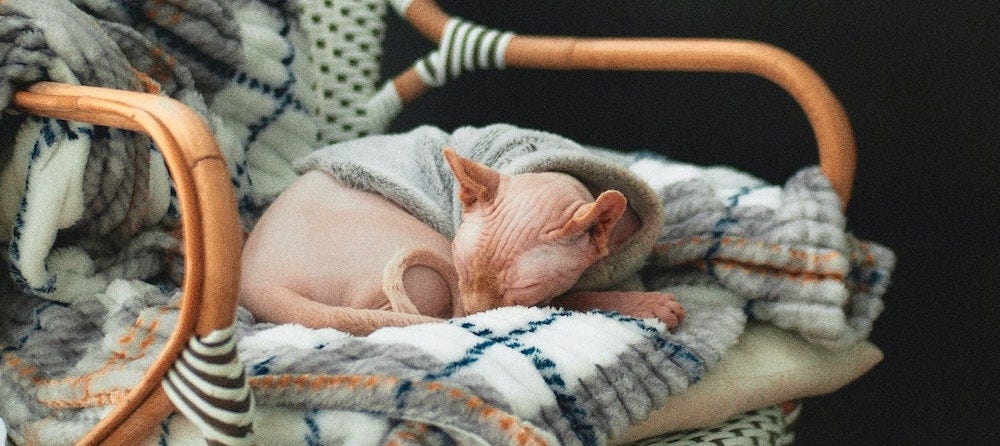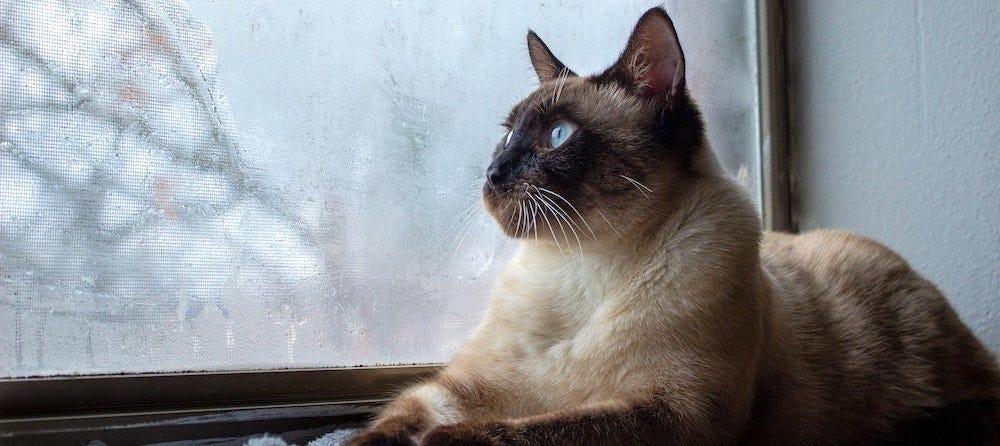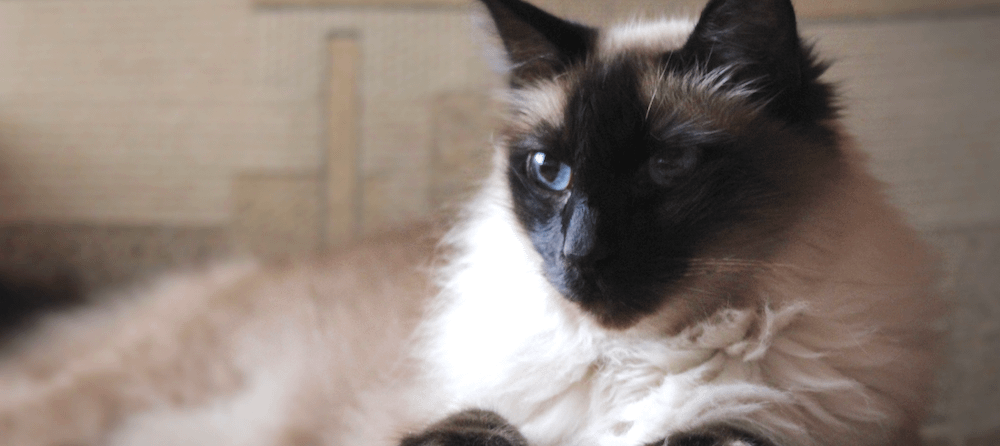The Javanese cat might confuse you at first glance—a cat that resembles the Siamese and Balinese cat breeds, yet is somehow slightly different. This would be a spot-on characterization, seeing as the Javanese is related to both the Siamese and Balinese (as well as the Colorpoint Shorthair).
The Javanese looks like a Siamese but with longer hair like the Balinese, along with multiple variations of color passed down from the Colorpoint Shorthair. When you combine all three of these breeds, you get the Javanese, a friendly, outgoing, personable, and stylish kitty. Even though these cats are rarer to come across than their parent breeds, they can make a lovely addition to your pet family.
To learn more about the Javanese cat and what life with them is like, keep reading!
| Javanese cat | ...at a glance |
|---|---|
| Personality | Loving, intelligent, vocal |
| Life expectancy | 10-15 years |
| Weight | 5-12 lbs |
| Coat & colors | Semi-long; colorpoint |
| Energy level | High |
| Affection level | High |
| Friendliness | High |
| Shedding level | Low |
| Required grooming | Low |
Overview of the Javanese cat
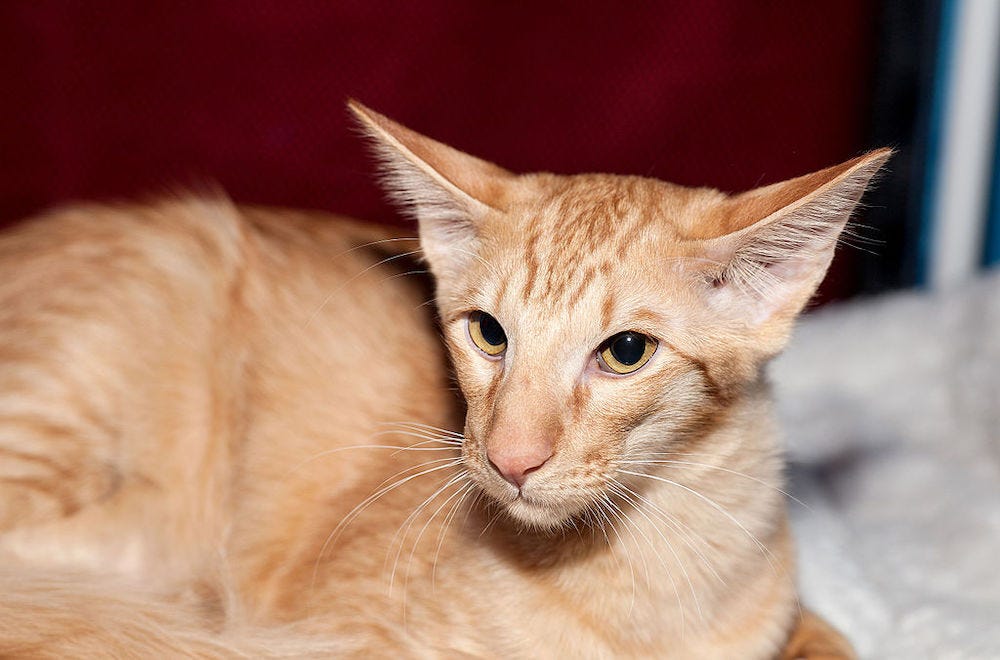
The Javanese cat is small- to medium-sized, muscular, yet elegant with a semi-long, silky coat that is simply begging to have your fingers run through it. At one point, the Javanese was considered its own breed but is now determined to be a color subdivision of the Balinese cat.
The cat show registries explain this rule as such: The Javanese cat comes in various non-traditional colors compared to the Balinese, which comes in the traditional four colors related to the Siamese.
Javanese are strong, active cats that thrive in family settings. They love to be around their people so that they can insert themselves into the fun at a moment’s notice.
Weight
Javanese cats are small to medium in size, typically weighing between 5 and 12 pounds. Males might be slightly larger than females, but it can fluctuate depending on their activity levels and what kind of foods they eat. A well-balanced, nutritional diet and plenty of exercise can help to maintain a healthy weight.
Length
This cat breed is fairly proportionate in size and can grow up to 14 inches long. They have tubular bodies that resemble the Siamese and Balinese cat breeds, along with hind legs that are longer than the front legs. This makes the Javanese appear taller and elongated.
Coat
The Javanese coat is what sets them apart from their parent breeds. It is quite the combination of all three breeds: The Siamese are famous for their short colorpoint coats, the Balinese are treasured for their long colorpoint coats, and Colorpoint Shorthairs are adored for the variety of colors they can display. All of this relates to how the Javanese are perceived.
Javanese cats have semi-long fur and colorpoint patterns, and display multiple color combinations. They are also likely to have deep blue eyes that are hard to miss.
Life expectancy
Javanese cats can live a long and happy life when properly cared for. In general, the average lifespan of a Javanese cat is 10 to 15 years. You can ensure that your Javanese is in optimal health by regularly taking them to the vet and monitoring them for any physical or behavioral changes.
History of the Javanese cat
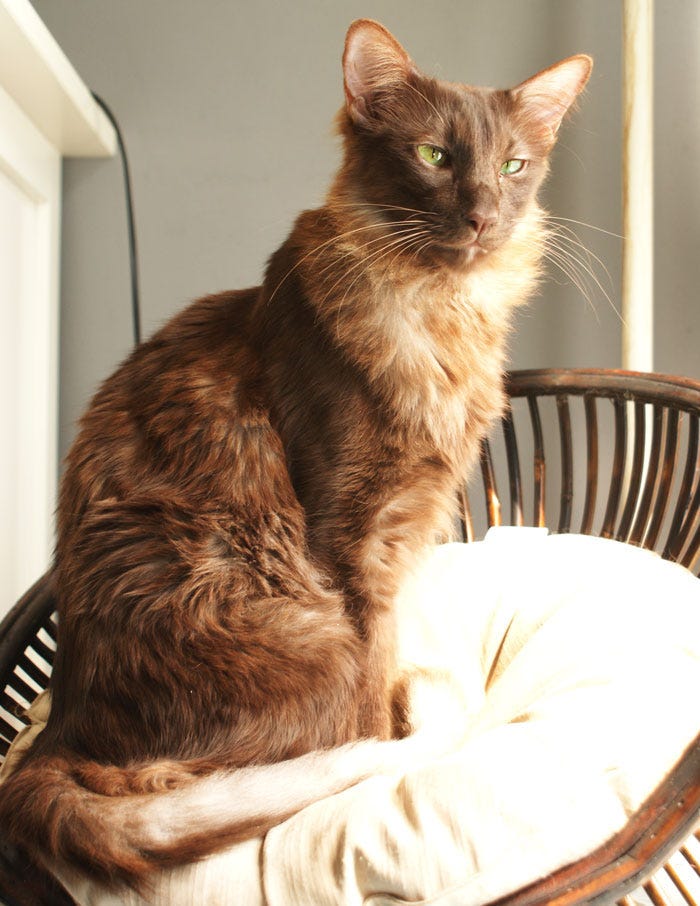
Though today the Javanese cat is a division of the Balinese, that wasn’t always the case. In the 1970s, breeders wanted to introduce new patterns and colors into the Balinese cat breed.
The difference between the two is that Balinese cats only come in four traditional colors, while the Javanese can come in an additional five solid point colors, as well as lynx point colors and parti-color point colors.
The Javanese developed when breeders began mating Colorpoint Shorthair cats with Balinese cats. This helped to create a cat with Siamese features, long silky hair, and multiple color variations. Inevitably, the best of all of these breeds was infused into one adorable kitten: the Javanese.
To summarize: While Javanese cats are recognized as part of the Balinese breed, not all Balinese cats are recognized as Javanese cats.
Characteristics of a Javanese cat
With the body shape and facial structure of the Siamese, you get a unique and exotic-looking cat that is both strong and graceful.
The long, silky coat of the Balinese cat draws people in. You can’t help but want to pet a Javanese. Plus, with the variety of coat colors, you could come across hundreds of Javanese cats that all look different.
Javanese cats have strikingly large ears and wedge-shaped faces that almost bear a resemblance to a tiny alien. Their coat is not as long as the Balinese in many cases, but the Javanese similarly do not have an undercoat, which can make grooming an easier process.
Coat colors
As for their coat, the Javanese will be colorpoint with one of the following colors:
- Red (perhaps the most recognized)
- Cream
- Cinnamon
- Fawn
- Smoke
- Seal-lynx
- Seal-tortie
- Chocolate-tortie
- Lilac-cream
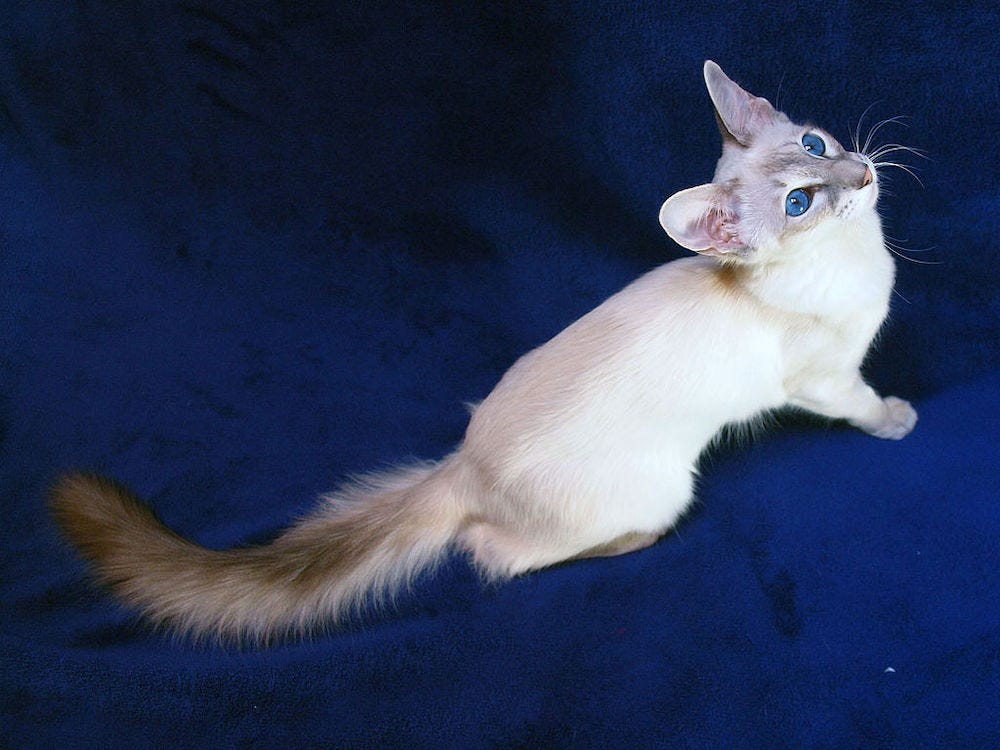
Personality and behavior
The Javanese cat inherits many beloved traits from the Siamese, Balinese, and Colorpoint Shorthair breeds. They are outgoing, friendly, loving, and family-oriented cats that like to be around their humans. Like the Siamese and Colorpoint Shorthair, these are vocal cats that let their humans know when they need more attention or a little snack.
Javanese get along well with other cats in the home and can even play well with dogs. They are great family pets because they are tolerant of children and typically gentle. While they can be active and playful, they are adept at understanding boundaries and their own needs.
Intelligent and energetic
What happens when you get a cat that is both smart and energetic? You need to find many different ways to keep them entertained. Having mental enrichment games and puzzles around the house is one option to keep your Javanese entertained, while teaching them tricks and how to walk on a leash is an excellent way for you to be involved in their enrichment.
Javanese cats will also climb and find ways to get to the highest point in your house, so be prepared with cat trees and shelves for them to perch on. They are active cats that don’t always need you to be involved, but if you can find a way to facilitate their antics, the happier they will be.
Caring for a Javanese cat
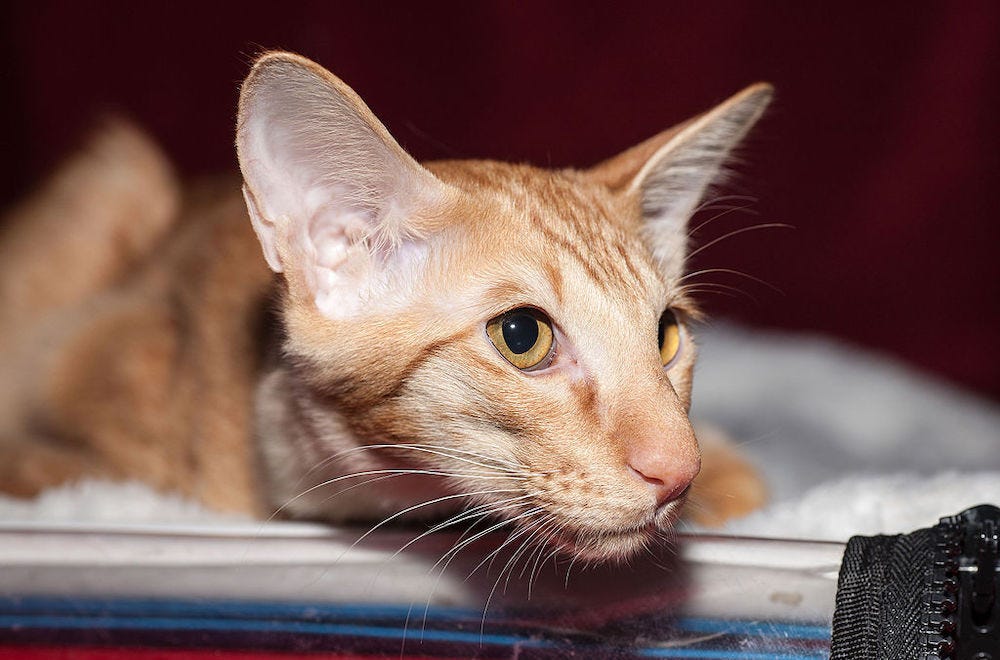
The best ways to stay on top of caring for your Javanese is to ensure that they are getting enough exercise each day and eating a nutritional diet. You’ll want to play with your Javanese as often as possible to mitigate any possible boredom on their end.
Additionally, by playing and exercising with your cat, they’ll be set up to live a longer and healthier life. And who doesn’t want to play with such a sweet feline? It’s truly a win-win.
Grooming
Grooming a Javanese is relatively easy. Though their coat is semi-long, its lack of undercoat means shedding is minimal. Their coats are less likely to tangle and mat, meaning weekly brushing should be plenty for your Javanese to look fabulous.
You’ll want to trim their nails at least monthly, and maintain proper dental health to help avoid issues like feline periodontal disease. Keep their bathroom area clean by scooping daily or investing in a self-cleaning litter box.
Health-related issues
Javanese cats are generally healthy, but some breed-related disorders are linked to this breed. Javanese are more prone to eye conditions, including crossed eyes, especially when compared to other cats. Dental issues and congenital heart defects could also be a concern.
Javanese are at a higher risk for both renal amyloidosis (a disorder affecting the kidneys) and amyloidosis (protein build-up in the liver). With regular visits to the veterinarian, you can be sure that you're on top of any health concerns your Javanese may develop.
Taking home a Javanese
If you’re interested in bringing a Javanese cat into your home, ask yourself: Am I ready for a new sidekick? That is truly what you get with this adorable and outgoing cat. They will stick by your side for the entirety of their life and bring you years of entertainment and laughter.
These cats are perfect for a person who spends a lot of time at home or has a big family, as your Javanese will want to be around people as much as possible. Don’t be surprised when you take one Javanese cat in and are already beginning to search for another!
Sources:
- Periodontal Disease In Cats: Back To Basics--With An Eye On The Future | NCBI
- Renal Amyloidosis | Cornell University College of Veterinary Medicine
- A Concise Review of Amyloidosis in Animals | NCBI
- Colorpoint Shorthair | VCA Animal Hospitals
- Javanese | VCA Animal Hospitals
Photo credits:
- © Nickolas Titkov / Wikipedia Commons / CC-BY-SA-2.0
- © Yusui.y / Wikipedia Commons / CC-BY-SA-1.0

